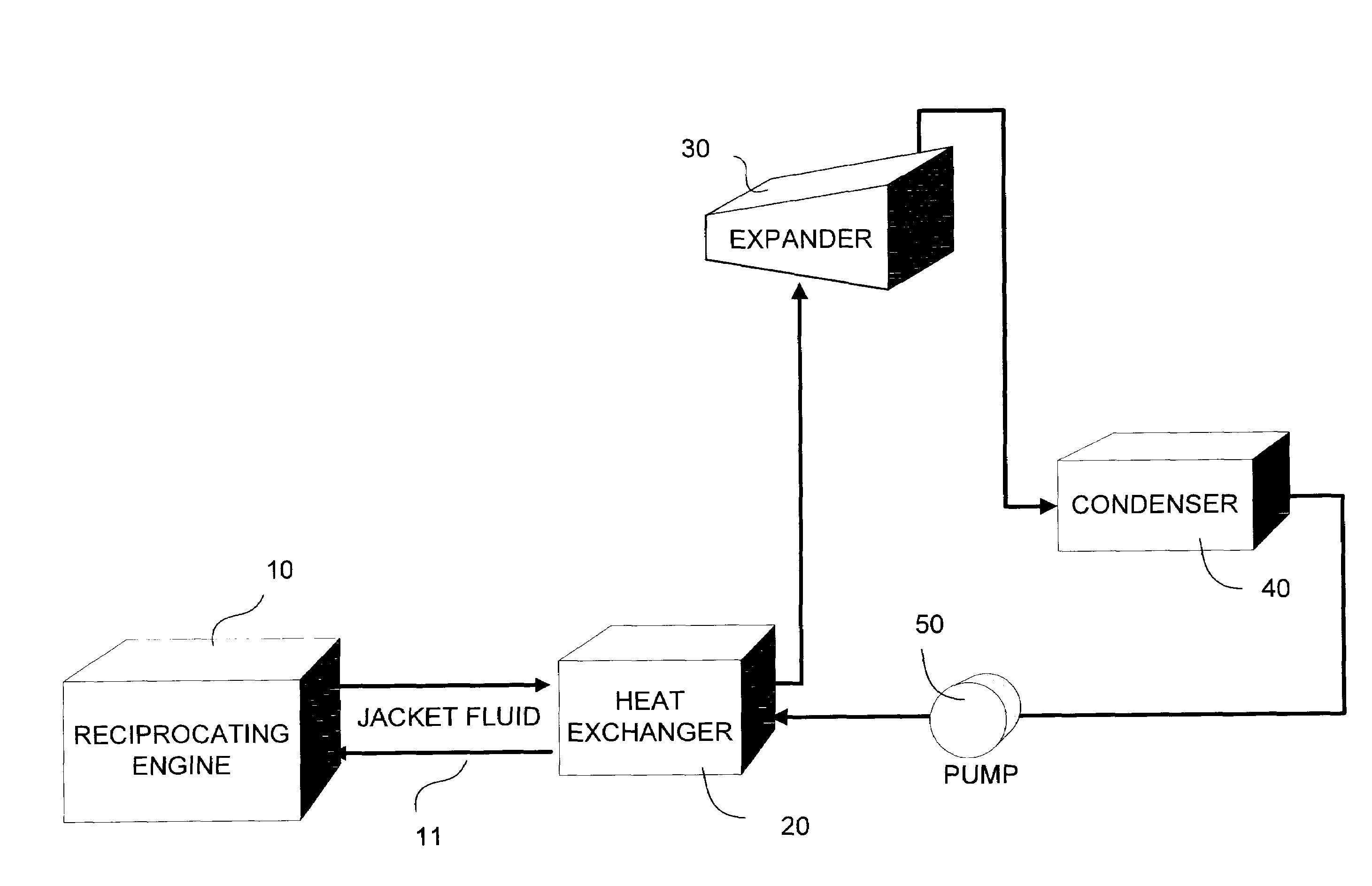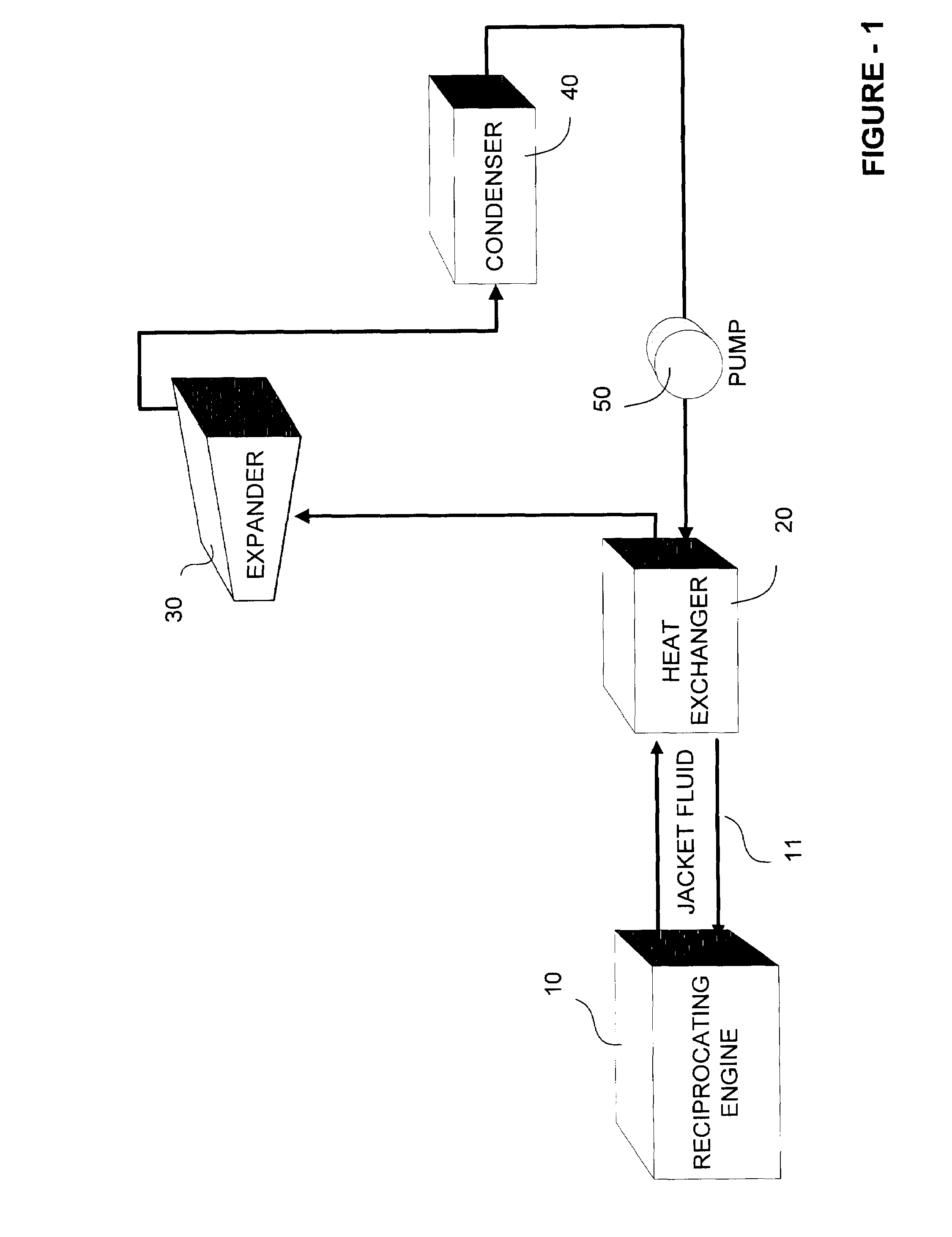Controlled Organic Rankine Cycle System for Recovery and Conversion of Thermal Energy
a rankine cycle and organic technology, applied in the field of thermal energy recovery systems, can solve the problems of increasing the start-up cost of these systems, the danger of combustibility still exists, and the danger of heat exchangers
- Summary
- Abstract
- Description
- Claims
- Application Information
AI Technical Summary
Benefits of technology
Problems solved by technology
Method used
Image
Examples
examples
[0058]A preferred system in accordance with the invention is intended for use with a reciprocating engine of the type commonly used to power electric generators or natural gas compressors, but is also useful with reciprocating engines that supply motive power to a vehicle, heavy equipment, or otherwise provide power to do useful work. Generally, the reciprocating engine is used to provide power in stationary applications for generating electricity and for compressing natural gas for pipeline transport, and the secondary power source is produced in the form of mechanical shaft horsepower by the expander. This mechanical shaft horsepower may be used to: 1) couple to a compressor to boost the inlet pressure of a primary compressor or to generically move gases (see FIG. 8); 2) couple to a pump to pump liquids (see FIG. 9); or 3) couple to an electric generator to produce electricity at grid-connected or remote sites where the electricity is then used to reverse feed the grid, supplement...
PUM
 Login to View More
Login to View More Abstract
Description
Claims
Application Information
 Login to View More
Login to View More - R&D
- Intellectual Property
- Life Sciences
- Materials
- Tech Scout
- Unparalleled Data Quality
- Higher Quality Content
- 60% Fewer Hallucinations
Browse by: Latest US Patents, China's latest patents, Technical Efficacy Thesaurus, Application Domain, Technology Topic, Popular Technical Reports.
© 2025 PatSnap. All rights reserved.Legal|Privacy policy|Modern Slavery Act Transparency Statement|Sitemap|About US| Contact US: help@patsnap.com



